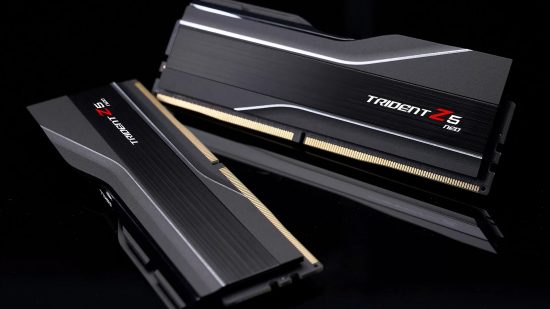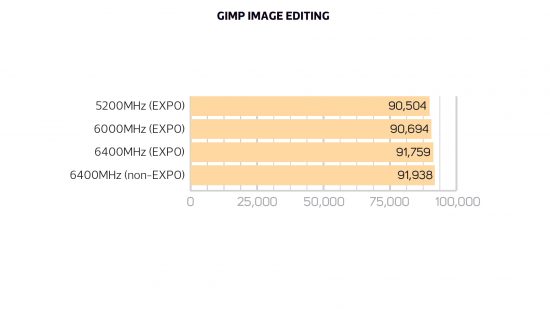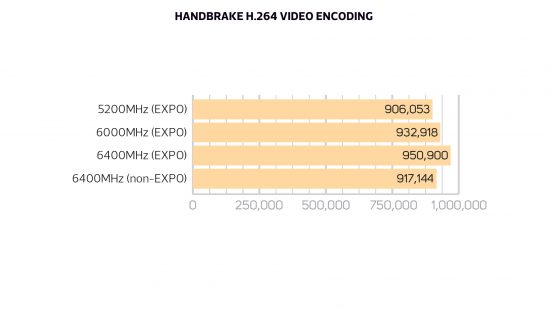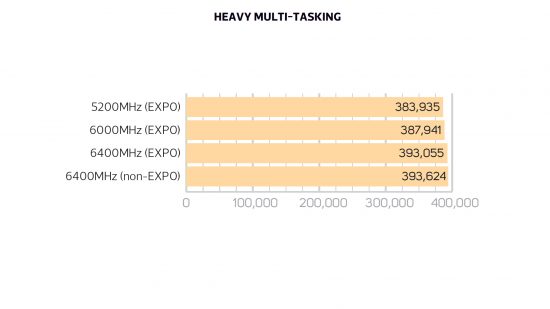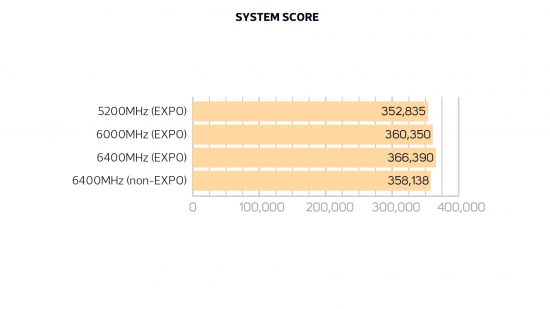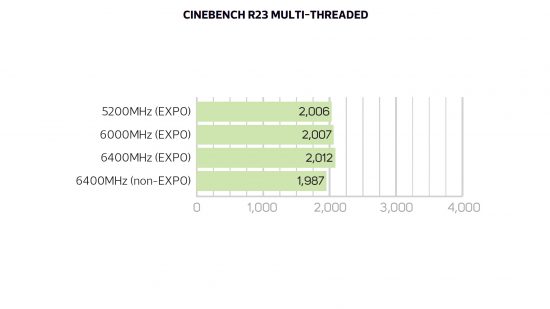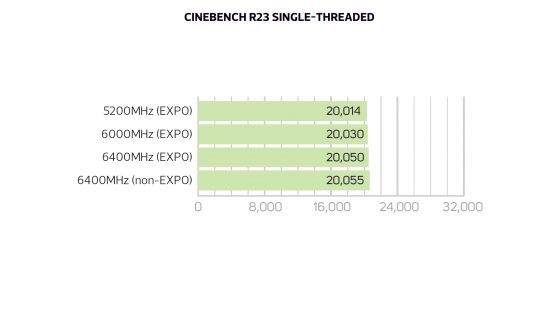The memory landscape has changed since we first looked at DDR5 memory alongside Intel’s 12th-gen CPU launch, and you won’t now need to wait weeks for your DDR5 kit to arrive. Frequencies are much higher too, with many kits offering speeds in excess of 6000MHz, which is the new sweet spot for Ryzen 7000-series CPUs according to AMD’s gurus.
What’s more, we’re now seeing the introduction of the AMD EXPO standard. This is essentially like Intel’s XMP, but for AMD systems, honing timings to offer the best performance.
At Custom PC, we’ve been reviewing the latest memory since 2003, and we’ve tested and overclocked hundreds of kits, going right back to the original DDR era. We run a number of application and gaming benchmarks to assess performance, and also see how far we can overclock each kit. For more information, check out our How we test page.
We want to answer two questions here. Firstly, which speeds are best for an AMD system – will a cheap 5200MHz kit represent a false economy, and is using a faster kit going to net you more performance? Secondly, is there much difference between a typical DDR5 kit and an EXPO kit?
Our test system this month includes an ASRock X670E Taichi motherboard, Nvidia GeForce RTX 3070 GPU and 32GB of G.Skill Trident Z5 Neo EXPO memory adjusted to different speeds, plus a similar kit of non-EXPO memory. The Infinity Fabric clock was kept at auto, but the memory controller frequency was in sync with the RAM frequency.
G.Skill Trident Z5 Neo EXPO performance
Our GIMP image editing score revealed small scaling when increasing the speed to 6400MHz from 6000MHz, but the gains over 5200MHz were minimal. Meanwhile, the non-EXPO kit performed roughly the same as the EXPO kit set to the same frequency.
Our heavily multi-threaded Handbrake video encoding test, though, saw even the 6000MHz EXPO kit outperform the non-EXPO kit, despite its 400MHz advantage, and while it was a near tie for the top spot between 6400MHz kits, it was the 6000MHz and 6400MHz EXPO kits that prevailed.
G.Skill Trident Z5 Neo EXPO Cinebench performance
Meanwhile, Cinebench saw slim margins between all kits in the multi-threaded test, with both 6400MHz tests within spitting distance, but again there wasn’t much difference between any of the results here. The single-threaded test, though, put the non-EXPO 6400MHz kit in a distant last place, where even our EXPO kit reduced to 5200MHz was noticeably better.
G.Skill Trident Z5 Neo EXPO Far Cry 6 frame rate
In Far Cry 6, the best result was from the EXPO kit set to 6400MHz, with the 6400MHz non-EXPO kit getting similar frame rates to the EXPO kit when it was reduced to 6000MHz. However, there was a slight drop when reducing the EXPO kit to 5200MHz.
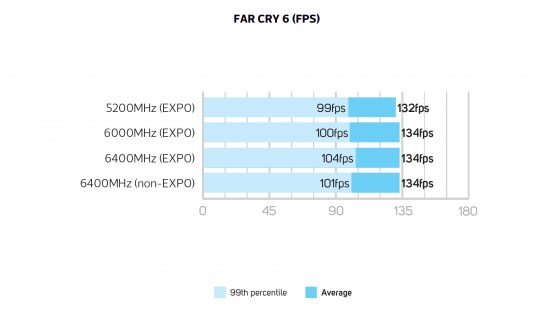
AMD EXPO memory conclusion
There are clear signs that the enhancements in timings of the EXPO memory kit offer advantages, with several tests showing our 6000MHz EXPO kit outperforming a 6400MHz non-EXPO kit. The latter was quicker in some tests, showing that frequency still counts and even boosting the EXPO kit to 6400MHz saw gains too.
However, a lot will come down to pricing and while EXPO offers tangible benefits in some situations, we’d suggest getting the cheapest 6000MHz kit you can find. If that happens to be an EXPO kit, that’s great, but we wouldn’t lose any sleep if it wasn’t.
If you’re looking to upgrade your memory, or build a new Socket AM5 DDR5 system, check out our full guide to the best gaming memory, as well as our guide to the best gaming CPU, where we detail the very best options at a range of prices.
